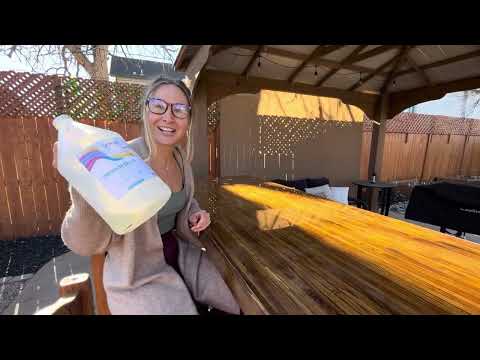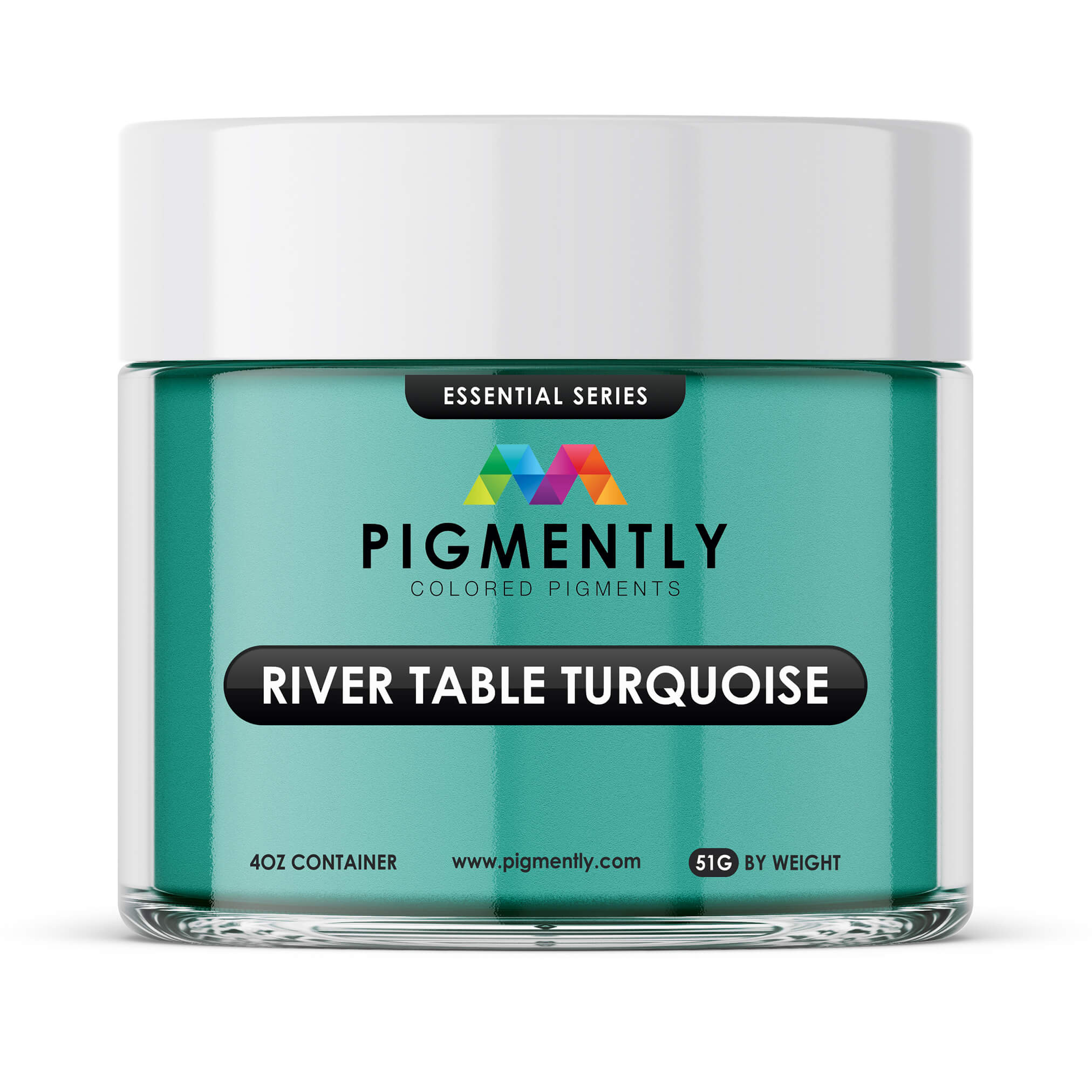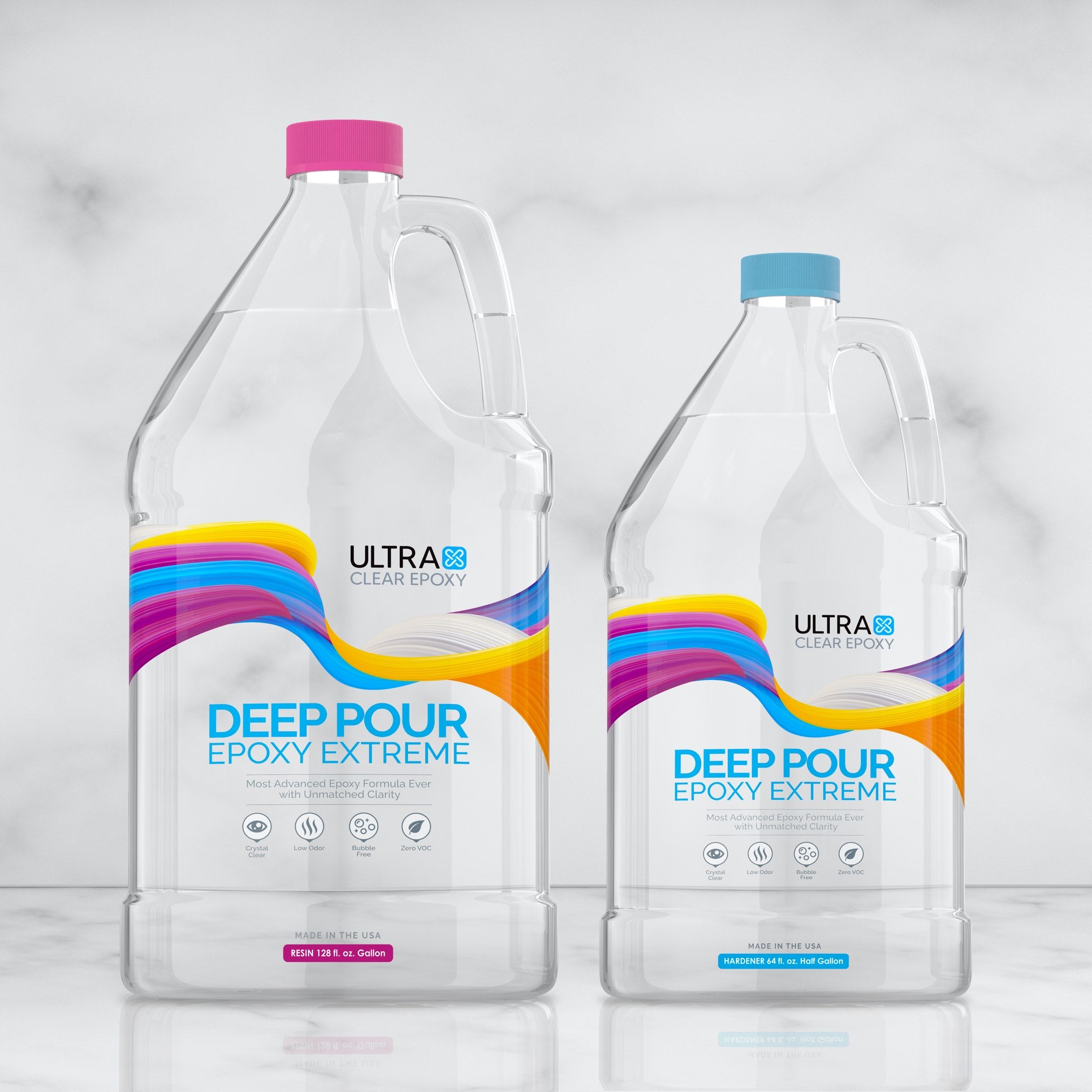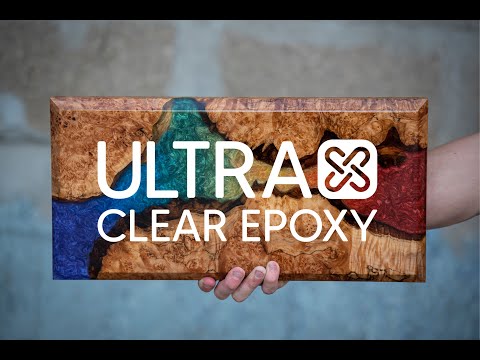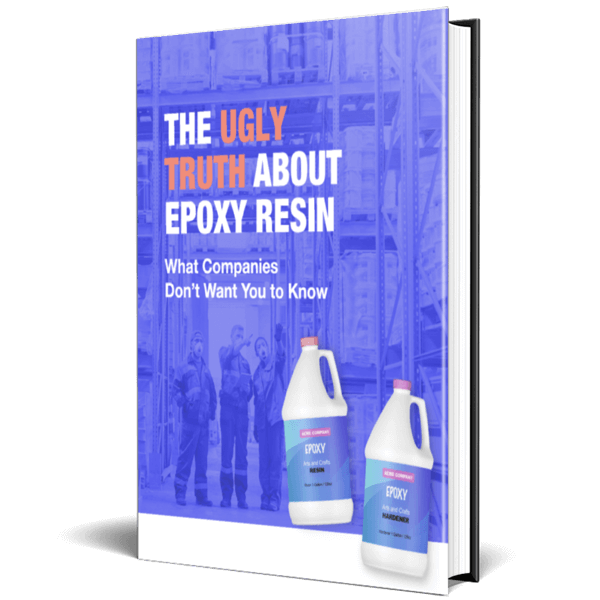Whether planning an epoxy project, working with epoxy resin directly, or attempting to take care of a finished project, most users inevitably come up with questions they don't have the answers to. Knowing the answers to these questions will provide a better understanding, leading to greater success with any epoxy endeavor.
In this article, we cover many frequently asked questions about epoxy resin, providing detailed answers as well as links to useful guides. We also give insight into the benefits of epoxy, and explain why high-quality epoxy products are worth the investment.
Frequently Asked Questions
FAQ #1: What Is Epoxy Resin and How Does It Work?
Epoxy resin is a two-part polymer system consisting of a liquid resin and a liquid hardener. When these components are measured and blended in the correct ratio, they chemically react to form a strong, durable plastic—a process called curing.
Cured resin is clear, self-leveling, and adheres well to many materials, making it ideal for protective coatings, resin art pieces, and repairs.
For most people, when the term epoxy is used, it's in reference to craft epoxies, which you can learn about here.
FAQ #2: What Are the Best Applications for Epoxy Resin?
Epoxy resin is extremely versatile and often used in the following ways:
-
Furniture Coatings: Achieve a high-gloss finish on table tops and other surfaces using UltraClear Bar & Table Top Epoxy.
-
Deep Layer Projects: Create river tables or thick art panels with UltraClear Deep Pour Epoxy.
-
Artistic Creations: Produce detailed crafts and jewelry with UltraClear Art & Craft Epoxy.
- Sealing and Repairs: It’s also effective for sealing surfaces and fixing minor damages.
See examples of epoxy projects here.
FAQ #3: How Do I Mix Epoxy Resin Correctly?
Successful mixing requires:
- Accurate Measurement: Use graduated cups to follow the exact resin-to-hardener ratio specified by the product.
- Thorough Mixing: Stir slowly for 3-5 minutes, scraping the container’s sides and bottom for uniformity; this will help you avoid common mistakes.
- Mixing Tools: For larger batches, a power drill with a mixing bit can ensure consistency without over-agitating the mixture. For small batches, a stir stick is usually sufficient.
- Minimize Air Bubbles: Mix gently to avoid introducing excess air, which can affect the finish.

FAQ #4: How Long Does Epoxy Resin Take to Cure?
Curing times vary by product and environmental conditions:
- Small Projects: Items like keychains or coasters typically cure in 24-48 hours.
- Medium Projects: Serving trays and art pieces may require 48-72 hours.
- Large or Thick Projects: Using UltraClear Deep Pour Epoxy in tandem with a table top coating can extend curing time by a few days, as extra time is needed for the deep pour layer to cure before applying the final topcoat. Always refer to the specific product guidelines for optimal curing conditions.
For tips on achieving a perfect epoxy cure, click here!
FAQ #5: Can Epoxy Resin Be Used Outdoors?
Yes, epoxy resin can be used outdoors with proper precautions:
-
UV Resistance: High-quality products, such as those from the UltraClear line, offer improved UV resistance; however, an additional UV-protective top coat may be necessary.
- Environmental Preparation: Ensure that the epoxy is fully cured and consider additional sealing if the piece is exposed to harsh weather conditions.
Check out our article on outdoor epoxy projects here.
FAQ #6: How Do I Remove Air Bubbles from Epoxy Resin?
Air bubbles can be managed by:
- Careful Mixing: Stir gently to avoid trapping air.
- Post-Pour De-bubbling: Immediately after pouring, use a heat gun or torch to gently pass over the surface, releasing trapped bubbles.
- Multiple Passes: For thicker applications, you may need to repeat the de-bubbling process to ensure a smooth finish.
We have an entire guide to avoiding and fixing problems like this. Check it out here!

FAQ #7: What Are Common Mistakes When Working with Epoxy Resin?
Common pitfalls for newcomers working with epoxy include:
- Incorrect Ratios: If your epoxy batch doesn't match the recommended resin-to-hardener ratio, you're much more likely to have curing problems.
- Insufficient Mixing: Incomplete mixing results in pockets of uncured resin.
- Poor Surface Preparation: Contaminants like dust, grease, or moisture can hinder adhesion. It's always best to work with clean surfaces.
- Rushing the Process: Not allowing adequate curing time between layers may compromise the final result. Carefully following the manufacturer’s guidelines helps avoid these issues.
FAQ #8: How Can I Fix Epoxy That Doesn’t Cure Properly?
If your epoxy remains tacky or soft:
- Identify the Cause: Check for issues with mixing ratios, inadequate stirring, or improper environmental conditions.
- Remove the Affected Area: Sand or scrape off the uncured portion, clean the surface thoroughly, and then reapply a new, properly mixed layer.
- Adjust Conditions: Ensure that you are working in a controlled environment with proper temperature (70-80°F) and low humidity.
See our guide to sticky epoxy for more advice.

FAQ #9: What Safety Precautions Should I Take When Working with Epoxy Resin?
Many brands of epoxy these days cut corners on quality and safety, so being safe when working with epoxy is always a good idea.
- Personal Protective Equipment (PPE): Wear nitrile gloves, safety goggles, and a respirator mask if needed.
- Ventilation: Work in a well-ventilated area or outdoors to reduce inhalation of fumes.
- Clean Workspace: Ensure your workspace is dust-free and that you follow proper disposal methods for any waste or leftover resin.
- Proper Handling: Avoid skin contact, and if contact occurs, wash immediately with soap and water.
Get addition tips on proper handling of epoxy here!
FAQ #10: How Does Epoxy Resin Compare to Other Finishing Options?
Compared to finishes like lacquer or polyurethane or protective waxes:
- High-Gloss Finish: Epoxy provides a brilliant, glass-like finish that enhances the natural beauty of materials like wood.
- Superior Durability: It forms a hard, scratch-resistant, and non-porous coating that outlasts nearly every other traditional finishes.
- Customization: Epoxy can be tinted, layered, or embedded with objects for a personalized look that other finishes generally cannot match.
- Self-Leveling Properties: Its ability to self-level ensures a smooth, uniform finish ideal for high-use surfaces such as table tops.
Learn more about the benefits of epoxy over other sealants here.
FAQ #11: How Should I Store Epoxy Resin and Hardener?
Proper storage is essential to maintain the quality of epoxy:
- Cool, Dry Environment: Store in a place away from direct sunlight and extreme temperatures, ideally between 60-80°F.
- Sealed Containers: Ensure the resin and hardener are tightly sealed to prevent contamination and moisture ingress.
- Check Expiration Dates: Always verify the product’s shelf life before use, as expired materials may not cure properly.
We talk more about epoxy storage in this article.

FAQ #12: Can I Mix Epoxy Resins from Different Brands?
Mixing epoxy resins from different brands is generally not recommended:
- Different Formulations: Each brand may have unique chemical compositions and curing times, leading to unpredictable results when mixed.
- Consistency Issues: For reliable performance, use products from the same line, such as UltraClear Epoxy, to ensure compatibility and consistent curing.
FAQ #13: What Should I Do if My Epoxy Resin Turns Yellow?
Yellowing can occur due to UV exposure or poor-quality resin:
- Preventive Measures: Use high-quality, UV-resistant epoxy like UltraClear Bar & Table Top Epoxy to minimize discoloration.
- Maintenance: Avoid prolonged exposure to direct sunlight. If yellowing occurs, consider sanding and applying a fresh, clear top coat.
- Quality Matters: Low-cost resins often lack the stability of premium products, leading to faster yellowing and loss of clarity.
See our article on resin yellowing for more detailed suggestions.

Why Choose UltraClear Epoxy?
When choosing an epoxy resin, quality is a key factor. Though low-cost, imported resins may offer a cheap price, they nearly always compromise on formulation, leading to issues such as uneven curing, yellowing, and reduced durability—and even health risks due to fumes or chemical irritants.
UltraClear Epoxy: Premium Resins for Clear, Safe, Long-Lasting Results
At UltraClear Epoxy, our resin products are designed and carefully produced to be clean, safe, and convenient, with a crystal-clear transparency that cures to a rock-solid finish.
You'll find our award-winning craft resins on the following pages:
Additional Resources
Here are some additional resources you may find useful:
-
10 Creative Epoxy Resin Projects for Beginners—New to epoxy? Get started with one of these 10 beginner-friendly projects!
-
Is Epoxy Difficult to Use? Tips and Beginner Projects—Epoxy may seem intimidating, but we promise it's not as difficult as it might seem. Learn more here.
-
The Epoxy Application Process, Step by Step—Learn the basics of applying epoxy here.
Have Questions? Want Advice? We're Here to Help!
If you have any questions about epoxy resin, or if you'd like assistance in planning an epoxy project, please reach out to us at UltraClear Epoxy—our epoxy experts are ready to assist!
You can contact us via phone or email here. During business hours, you can also text chat online with one of our resin specialists by clicking the Help button at the bottom of your screen.
In our online store, you'll find a variety of useful tools and supplies, ideal for resin projects, plus our award-winning UltraClear Bar & Table Top Epoxy and our UltraClear Deep Pour Epoxy.







